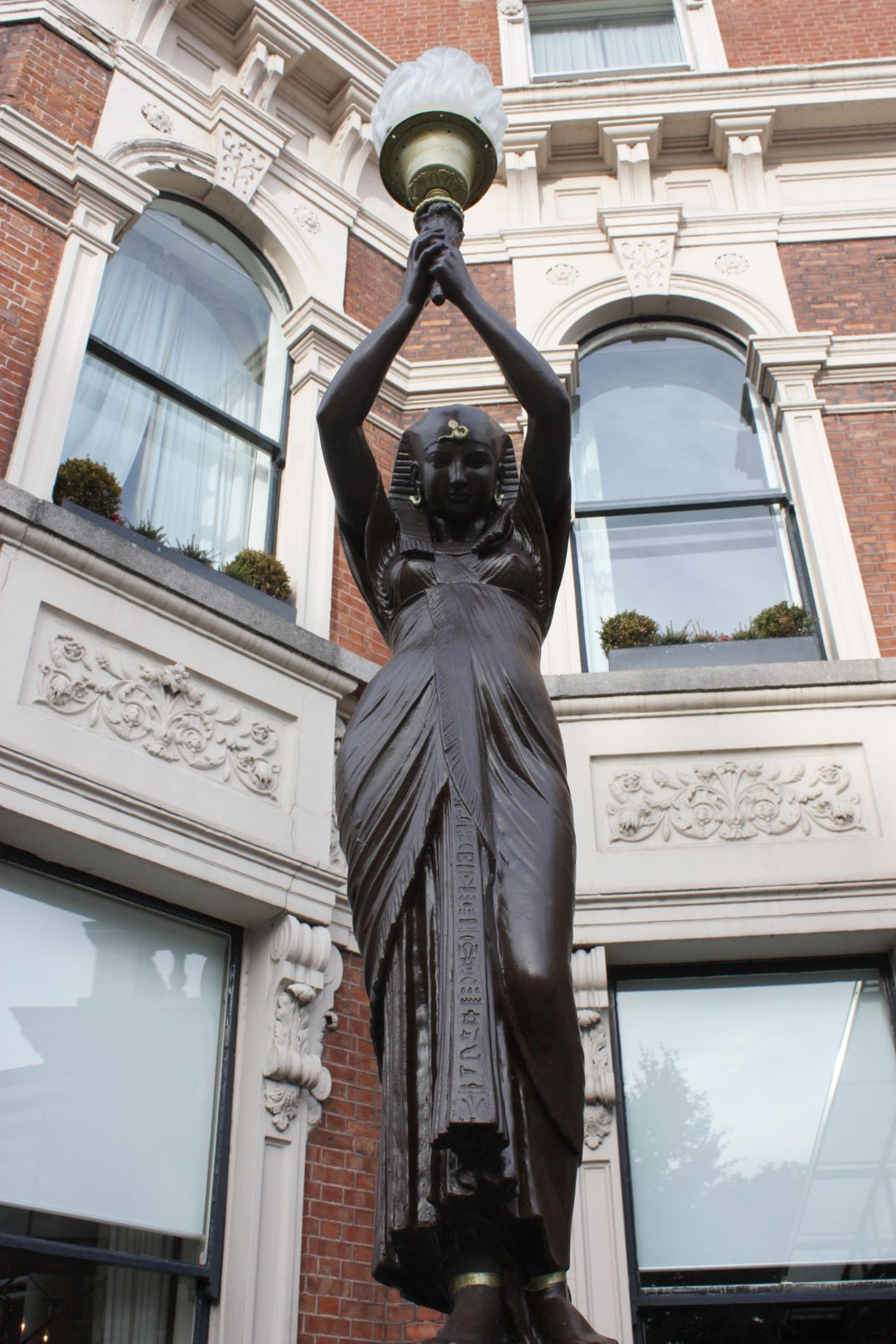Dublin Hotel Controversially Removes Four Statues of African Women
City officials say the Shelbourne, which moved the sculptures because it believed they depicted enslaved women, failed to follow proper procedures
:focal(800x449:801x450)/https://tf-cmsv2-smithsonianmag-media.s3.amazonaws.com/filer/b5/49/b549520c-7ef2-4220-989b-d4c3c0b3e765/shelbourne_statues.png)
In 1824, a man named Martin Burke converted three Dublin townhouses into a luxury lodging he dubbed the Shelbourne Hotel. A major renovation in the 1860s gave the hotel its historic façade. But as of this summer, four statues commissioned in 1867 no longer stand at the building’s entrance.
The Shelbourne removed the sculptures, which depicted four African women, amid an ongoing reckoning regarding monuments connected to colonialism and the slave trade, reported Ronan McGreevy for the Irish Times in July.
Now, that decision has come under scrutiny by local authorities and experts alike. As Giulia Heyward explains for Atlas Obscura, hotel management removed the statues because they believed the works depicted enslaved women—but others have refuted that claim. Dublin’s city council is also investigating the incident, as the Shelbourne failed to seek permission to make changes to its historic and protected structure.
“It was a decision taken just by us with our owner and operator. This decision has been coming for a number of weeks given what has been happening in the world,” the hotel’s general manager, J. P. Kavanagh, told the Times. “ … What comes next I don’t know at this stage, but we will work with the relevant authorities.”
The hotel purchased the two pairs of bronze statues—listed in a catalog as Candélabre Egyptienne and Candélabre Négresse—from a Paris-based foundry, according to Eleanor Flegg of the Irish Independent. Installed as part of an 1867 redesign, the four sculptures hold up lanterns and wear ornate decorations, including gold anklets that resemble shackles.
Art historian Kyle Leyden of the University of London argues that the statues do not depict enslaved people. Speaking with the Times’ McGreevy for a separate article, Leyden points out that if the works were of enslaved individuals, the catalog would have labeled them as such.
“’Nubian slave’ was a well-known and much fetishized nineteenth-century visual trope,” he says, adding that if the sculptor, foundry or buyer had wanted a statue of an enslaved person, “they would have had no qualms about calling it precisely that.”
Instead, Leyden theorizes that the statues show “aristocratic women of Egypt and Africa,” presenting the image of luxury and opulence that Irish architect John McCurdy, who led the Shelbourne’s redesign, wanted for the hotel.
Still, it’s worth noting that racism in 19th-century French art wasn’t limited to depictions of enslaved people. As Nigerian-Irish critical race theorist Ebun Joseph tells Atlas Obscura, black people’s bodies were fetishized and presented as “exotic” throughout the 1800s.
“Two of these statues were described as négresse. That, to me, is the female version of the n-word,” she says. “ … When we look at the racism, and racist ideas, that can be embodied in a statue like the ones we have in front of the Shelbourne, how can we allow them to continue?”
Further to reports and in the interests of clarity, the IGS was not consulted about the removal of statues from The Shelbourne Hotel. Such works require planning permission which we believe was not sought. The IGS has contacted DCC Planning urging them to address the matter. pic.twitter.com/2cftDLbffr
— Irish Georgian Society (@IrishGeorgian) July 28, 2020
When the statues were first removed, Dublin gave the hotel four weeks to address the alleged planning permission breach. The hotel requested a four-week extension, which the city council granted under the expectation of receiving a “substantive response,” McGreevy reported last week for the Times.
“The statues should be replaced immediately and the planning law should be complied with,” the council wrote in an email to former attorney general and minister for justice Michael McDowell, who’d complained about the statues’ removal, according to the Times.
The council’s email further expressed that any attempt by the hotel to seek retrospective permission would be “misguided.”
For now, the statues’ fate is unclear. The four pedestals where they once stood remain empty. But when the hotel first removed the statues, Kavanagh told the Irish Times that staff hoped to work with Irish Heritage to find suitable replacements.
“The world we have today, we’ve inherited,” Joseph tells Atlas Obscura. “But how we allow things to continue are the things that are going to change history. Maybe in 2020, these racist depictions will be removed. Maybe that’s the new history.”
/https://tf-cmsv2-smithsonianmag-media.s3.amazonaws.com/filer/fb/ce/fbceed36-7ee4-4cac-99c5-4a1eaeb3706e/penny_farthing_8589099646.jpg)
/https://tf-cmsv2-smithsonianmag-media.s3.amazonaws.com/filer/f9/c0/f9c0c5c2-771d-4643-928d-d44ab21bd98f/statue_of_slave_girl_outside_the_shelbourne_hotel_in_dublin_copy.jpg)
